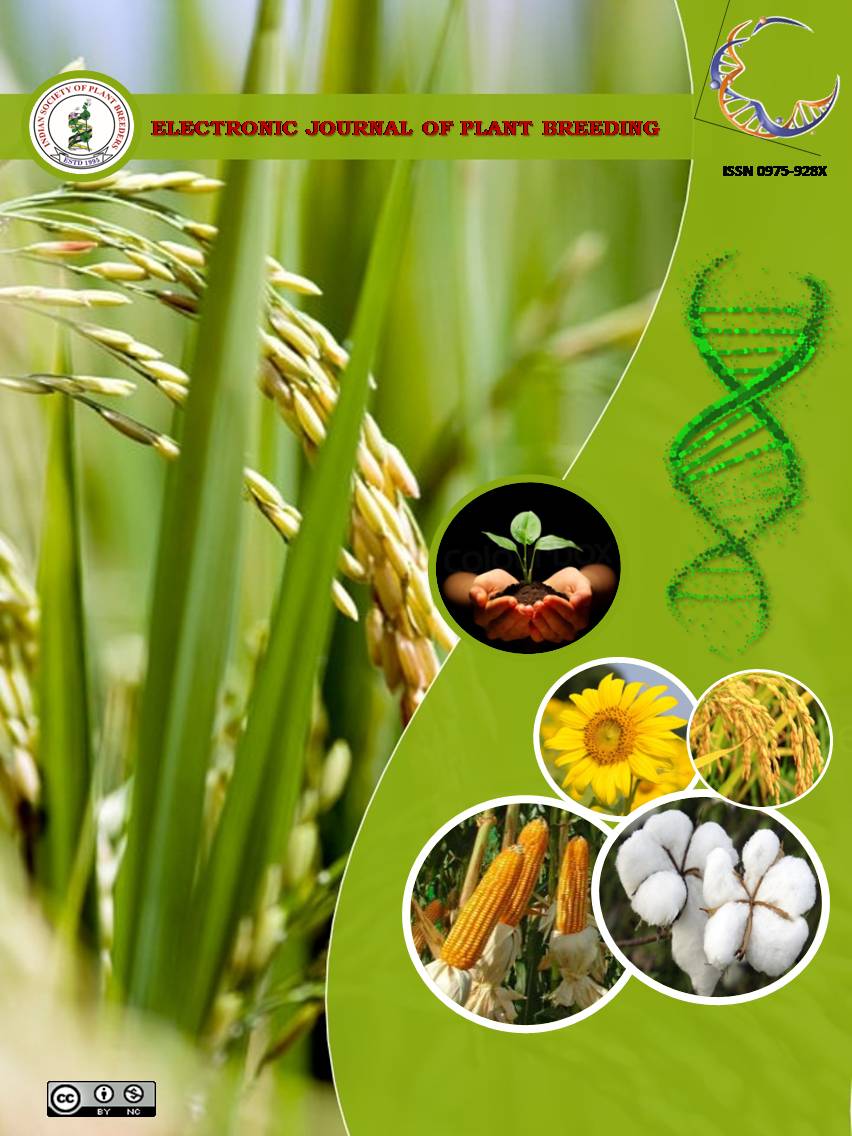Genetic variability studies in ADT 43/Seeraga samba cross derivatives of rice (Oryza sativa L.)
Abstract
In the present investigation 11 quantitative characters viz., days to 50% flowering, plant height, flag leaf length, flag leaf width, leaf length, leaf width, number productive tillers, panicle length, number of filled grain, thousand grain weight, single plant yield and 16 qualitative characters viz., Hulling percentage, milling percentage, kernel Length, kernel breadth, Length /breadth ratio, kernel length after cooking, kernel breadth after cooking, linear elongation ratio, breadth elongation ratio, cooking time, water up-take, volume expansion ratio, alkali spreading value, gel consistency, amylose content and head rice recovery were studied for ADT43/Seeragasamba cross derivatives in F8 generations. The quantitative characters had shown less difference between PCV and GCV. Out of eleven quantitative characters studied, five characters viz., Flag leaf length, Leaf length, number of productive tillers, thousand grain weight and single plant yield had shown high phenotypic coefficient variation (PCV) and genotypic coefficient variation (GCV) along with high heritability(h2) and genetic advance (GAM). The quality characters viz., Alkali spreading value and gel consistency had shown high phenotypic coefficient variation (PCV) and genotypic coefficient variation (GCV) along with high heritability (h2) and genetic advance (GAM). These characters are less influenced by environment. The additive gene action governed the above-mentioned characters and additive gene actions are responsible for selection and is beneficial crop improvement programme.

It is certified that:
- The corresponding author is fully responsible for any disputes arising due to the publication of his/her manuscript.
- The article has been seen by all the authors who are satisfied with its form and content.
- The sequence of names of authors in the by-line is as per their relative contribution to this experiment, giving due credit to all scientists who made notable contribution to it.
- All the authors fully understand that inclusion of any other co-authors or exclusion of any co-authors is not possible once the article has been submitted to the journal.
- The corresponding author takes full responsibility for this article.
- The address of the organization where the research was conducted is given.
- The article is exclusive for this journal, and the results reported here have not been sent (and will not be sent during its consideration by this journal) for publication in any other journal.
- Authors agree to abide by the objective comments of referees and do agree to modify the article into a short note as per the recommendation, for publication in the Electronic Journal of Plant Breeding.
- If published in Electronic Journal of Plant Breeding, the copyright of this article would vest with the Indian Society of Plant Breeders, who will have the right to enter into any agreement with any organization in India or abroad engaged in reprography, photocopying, storage and dissemination of information contained in it, and neither we nor our legal heirs will have any claims on royalty.


